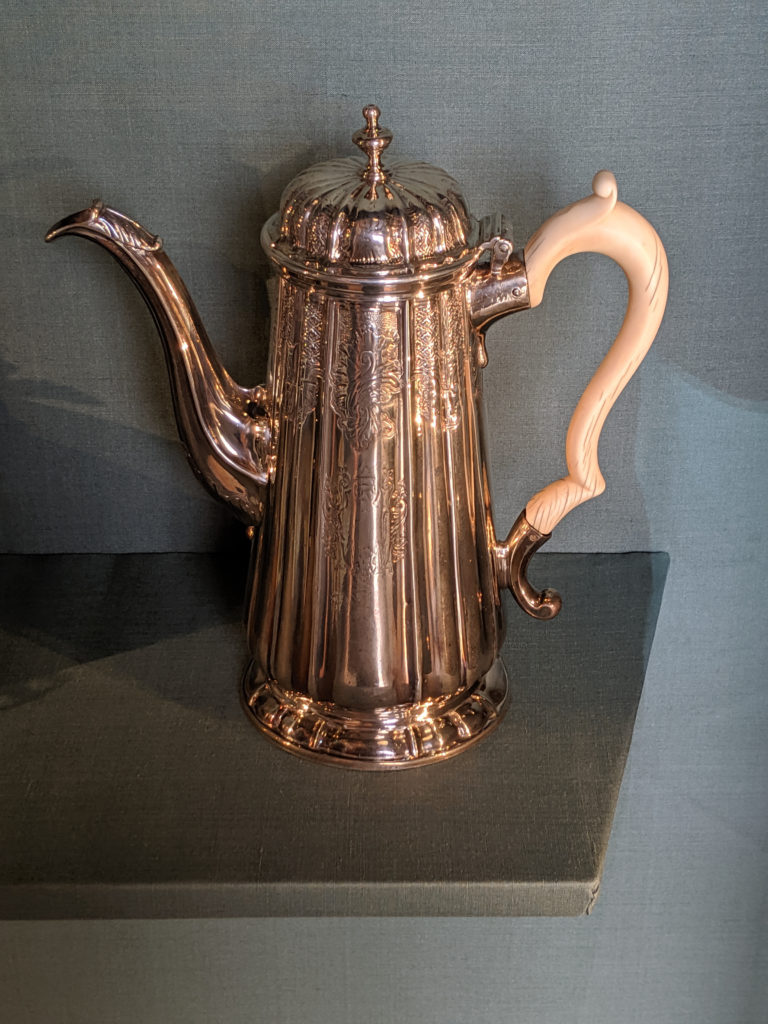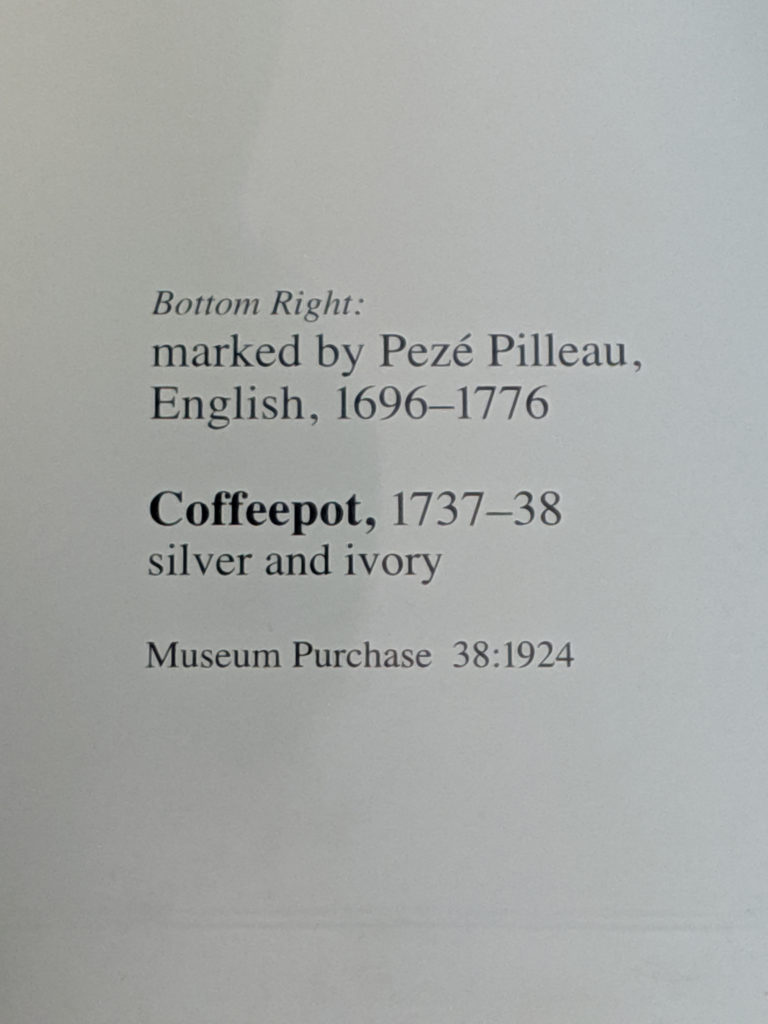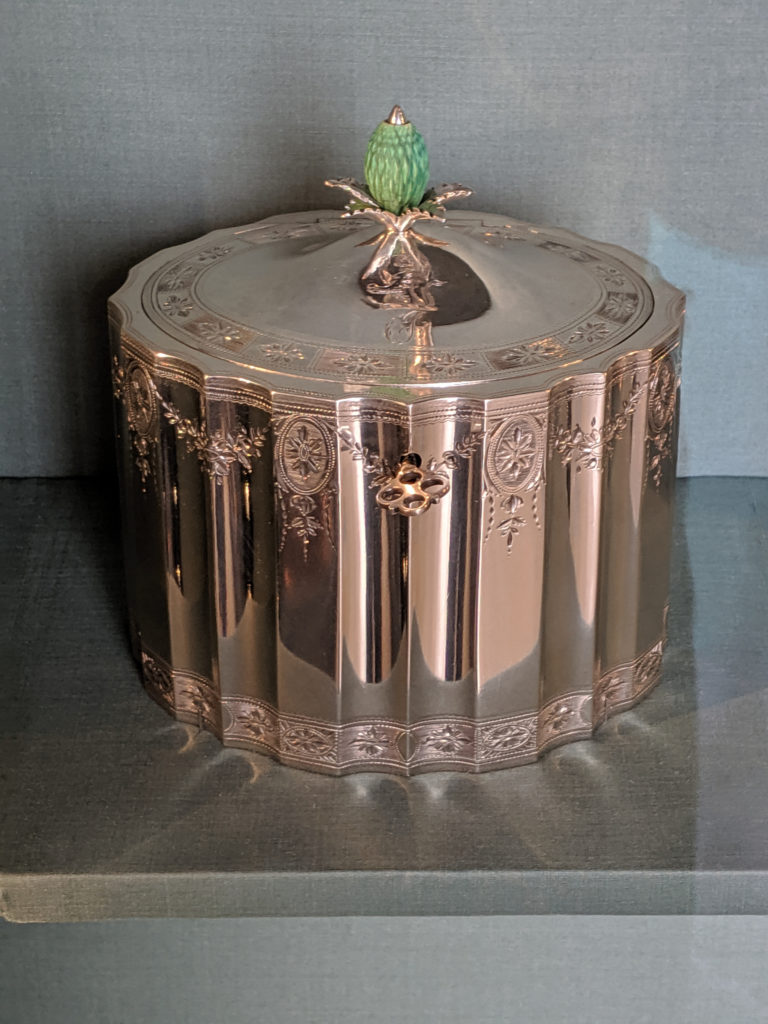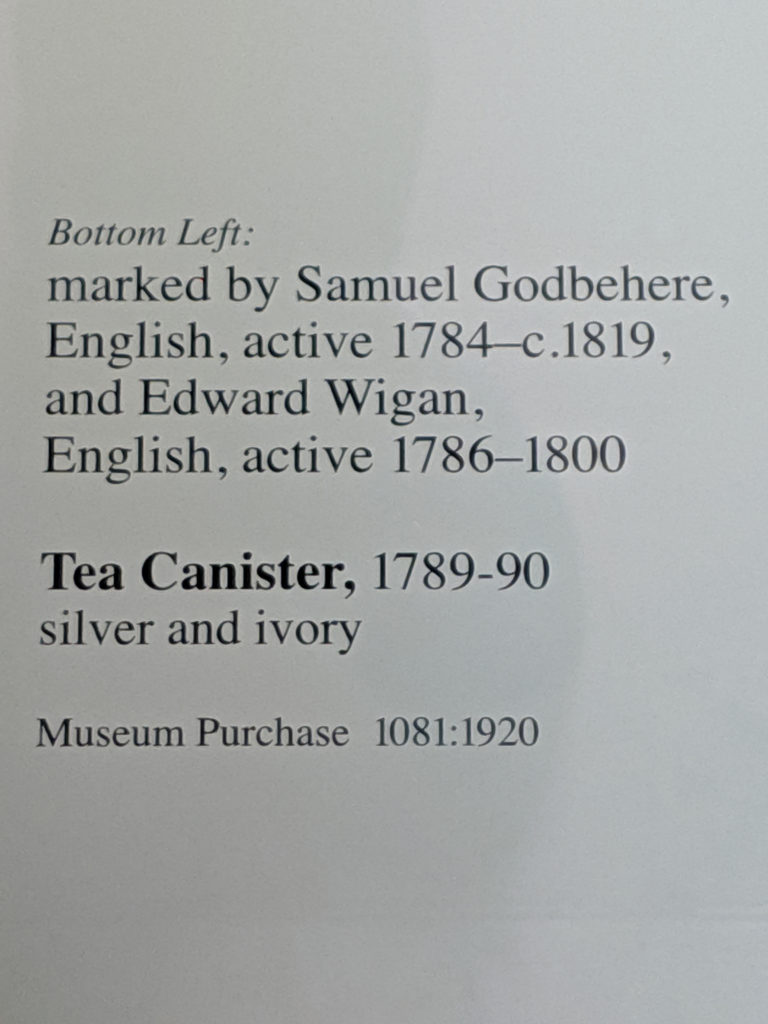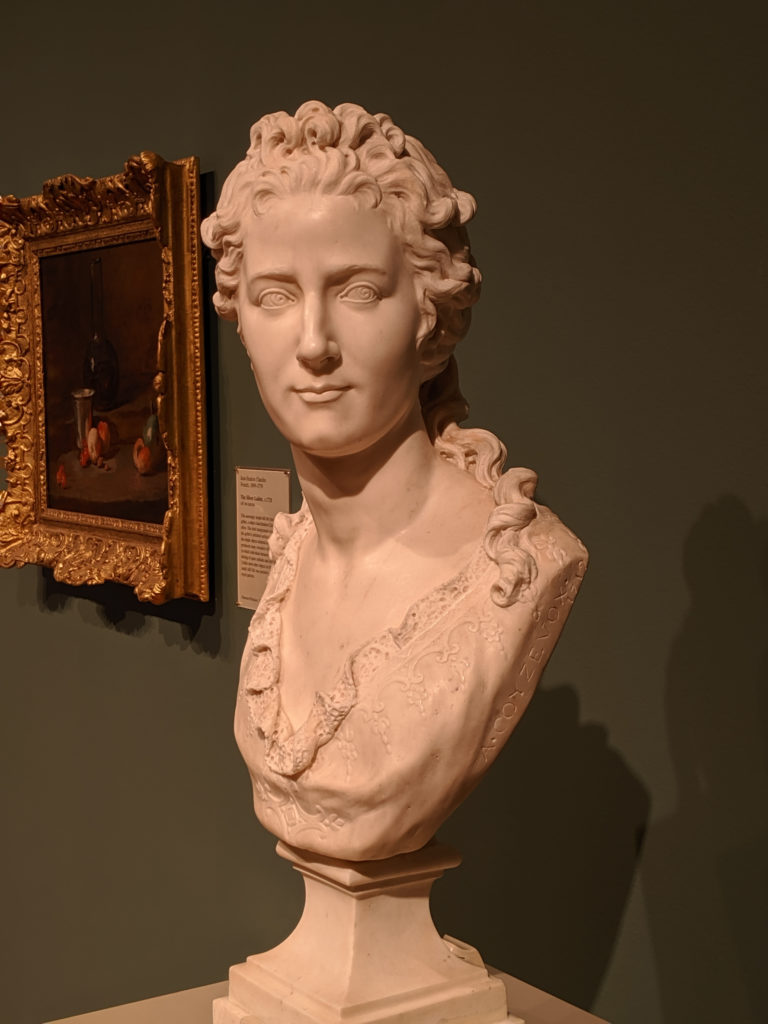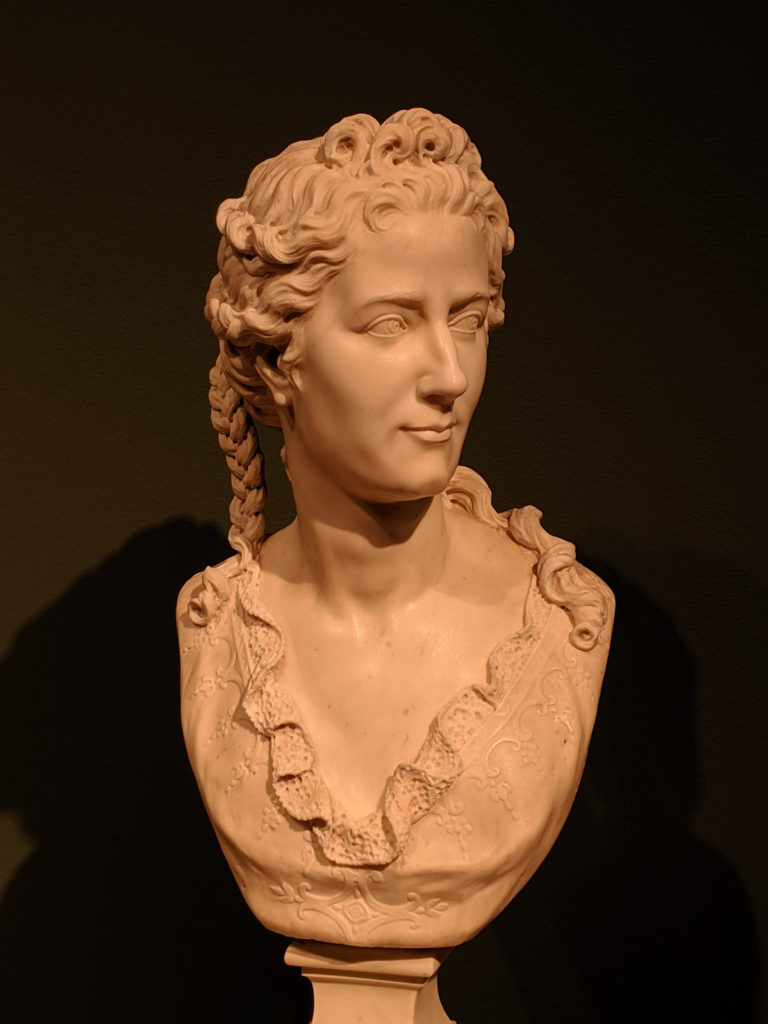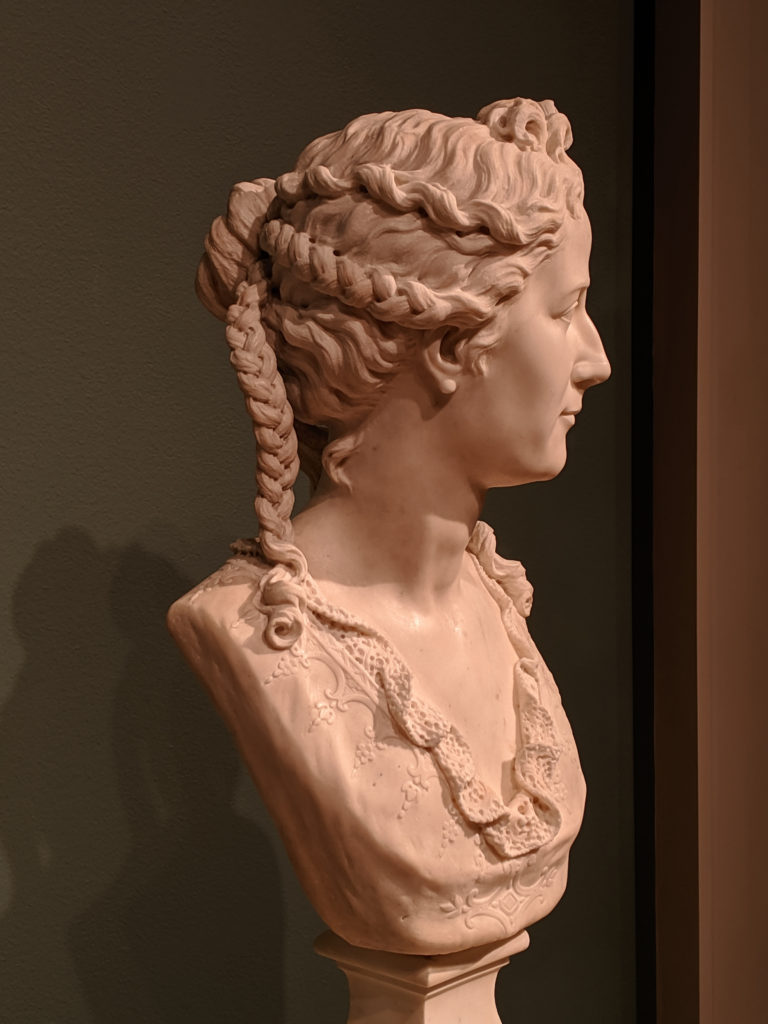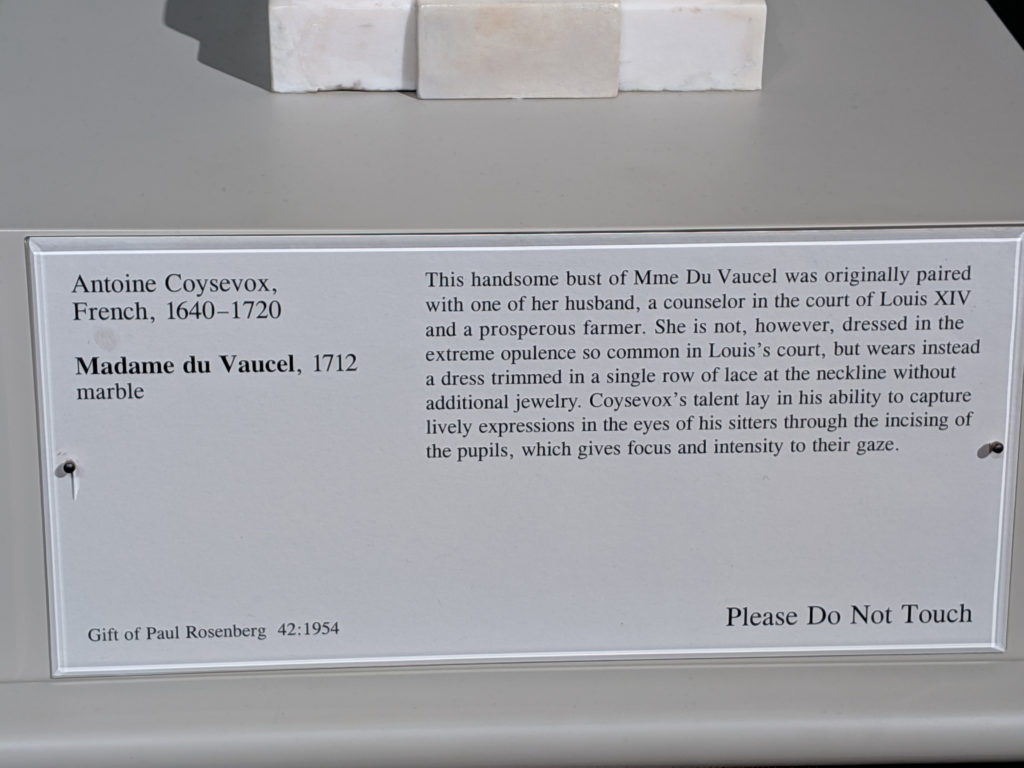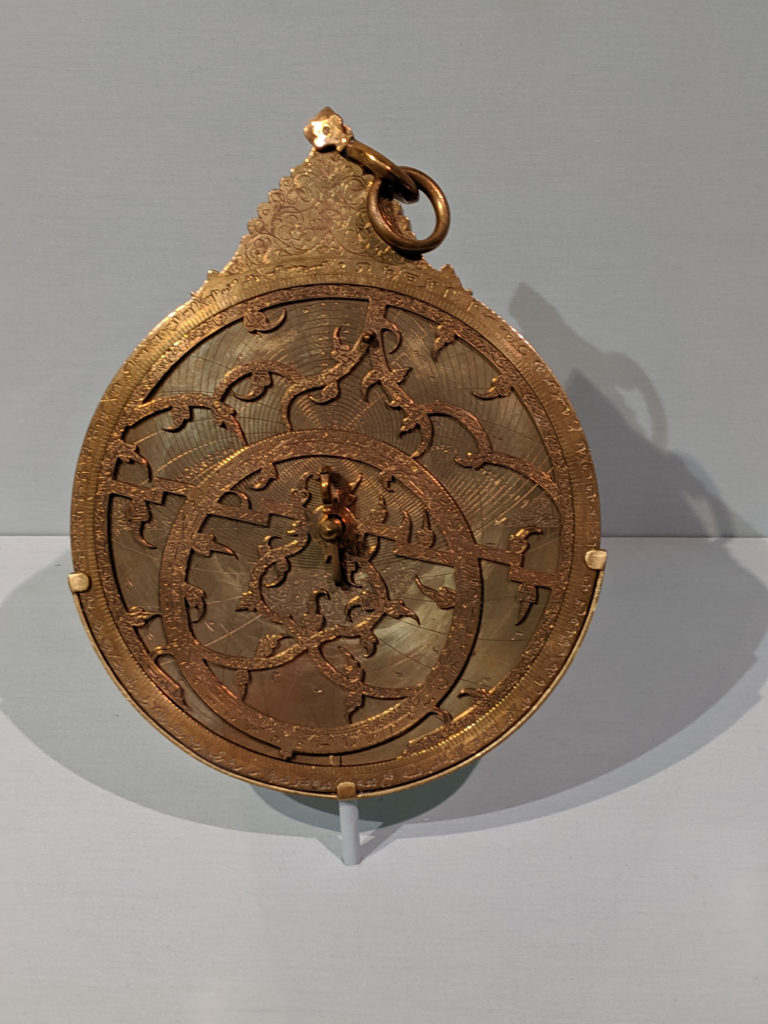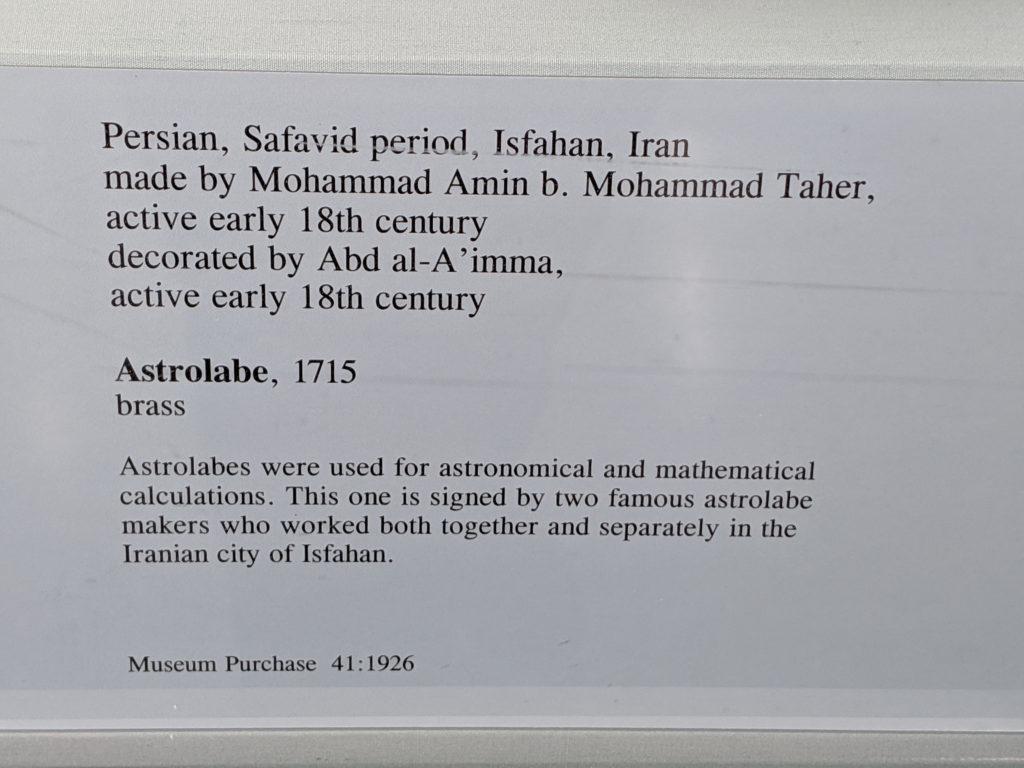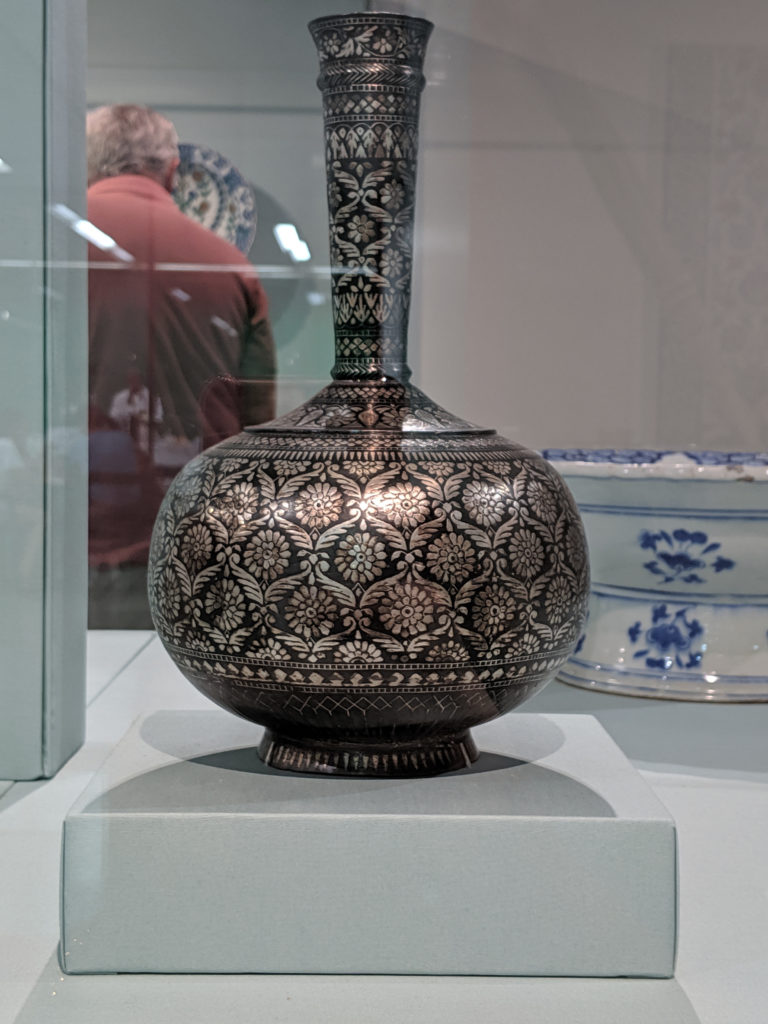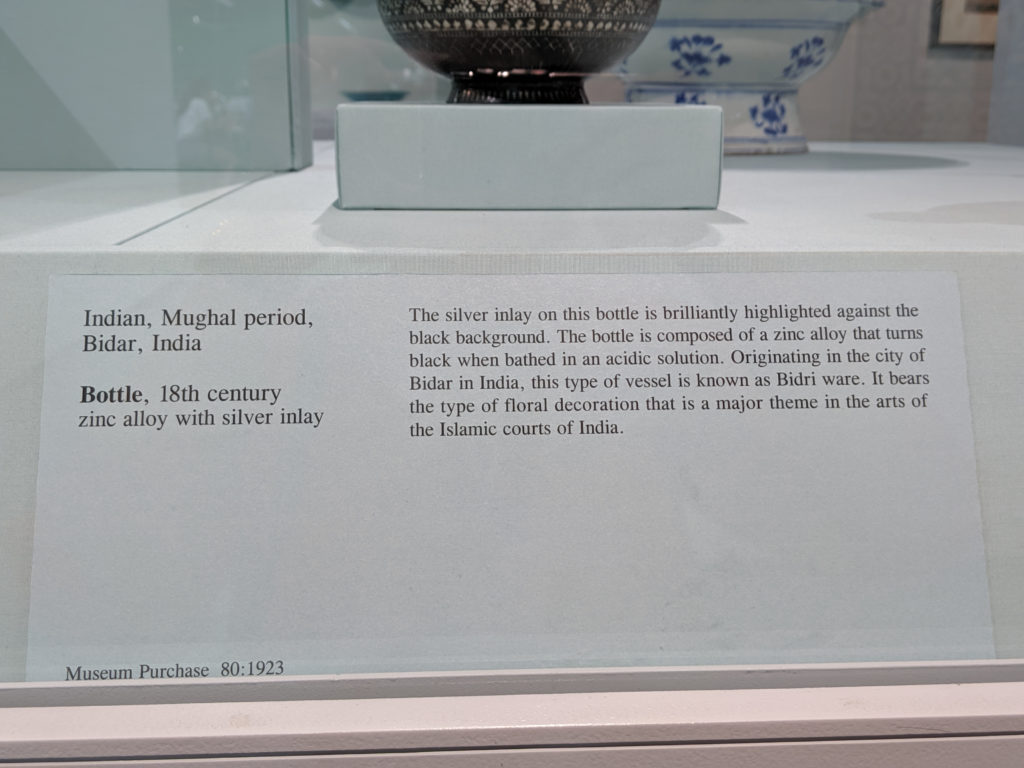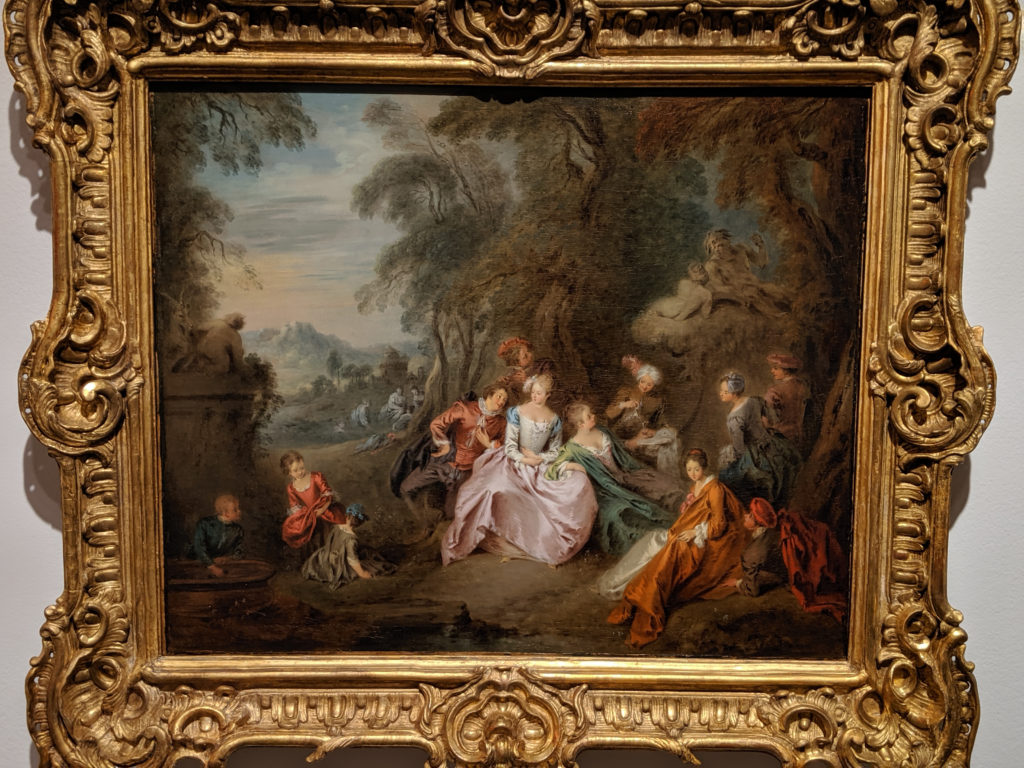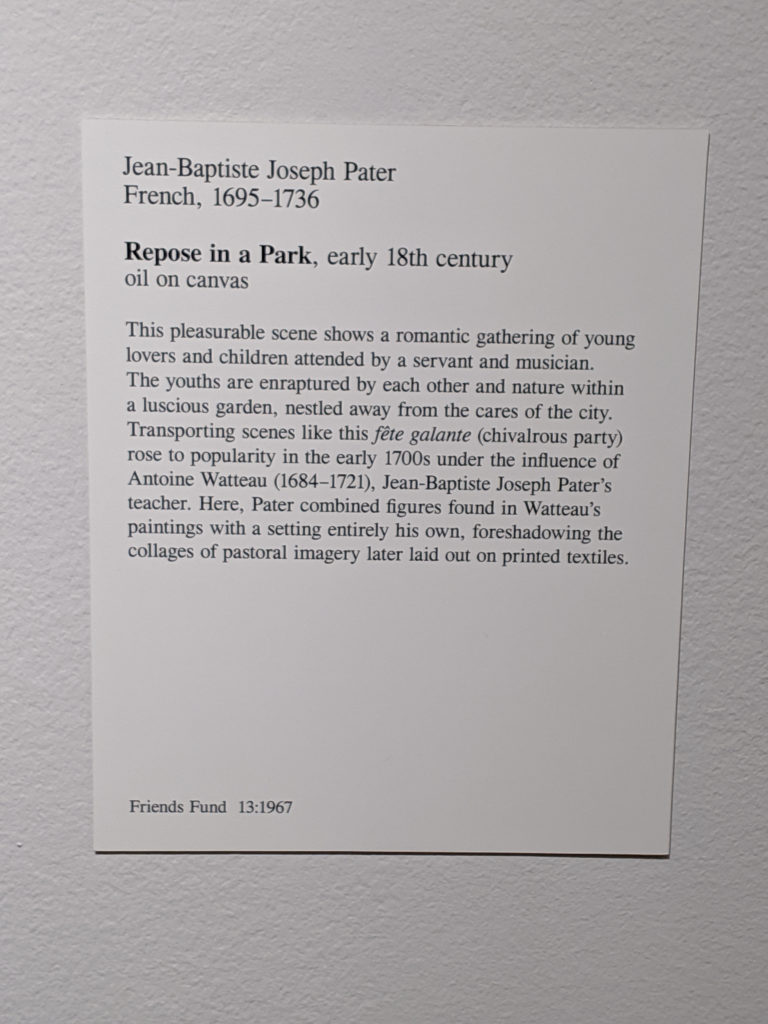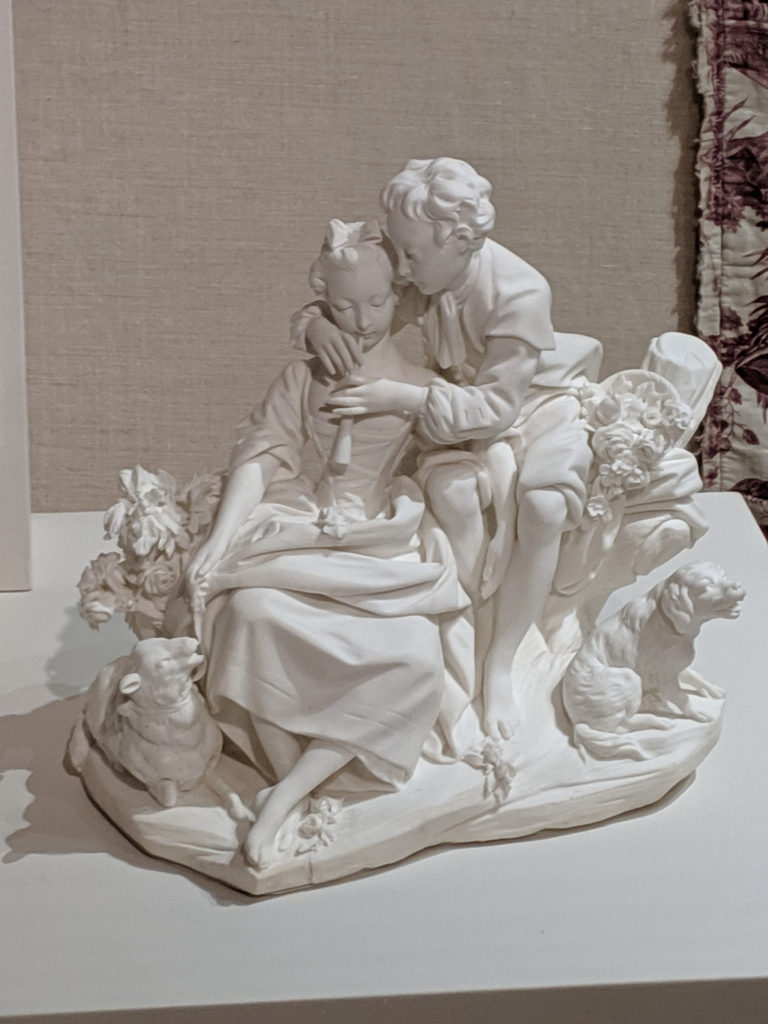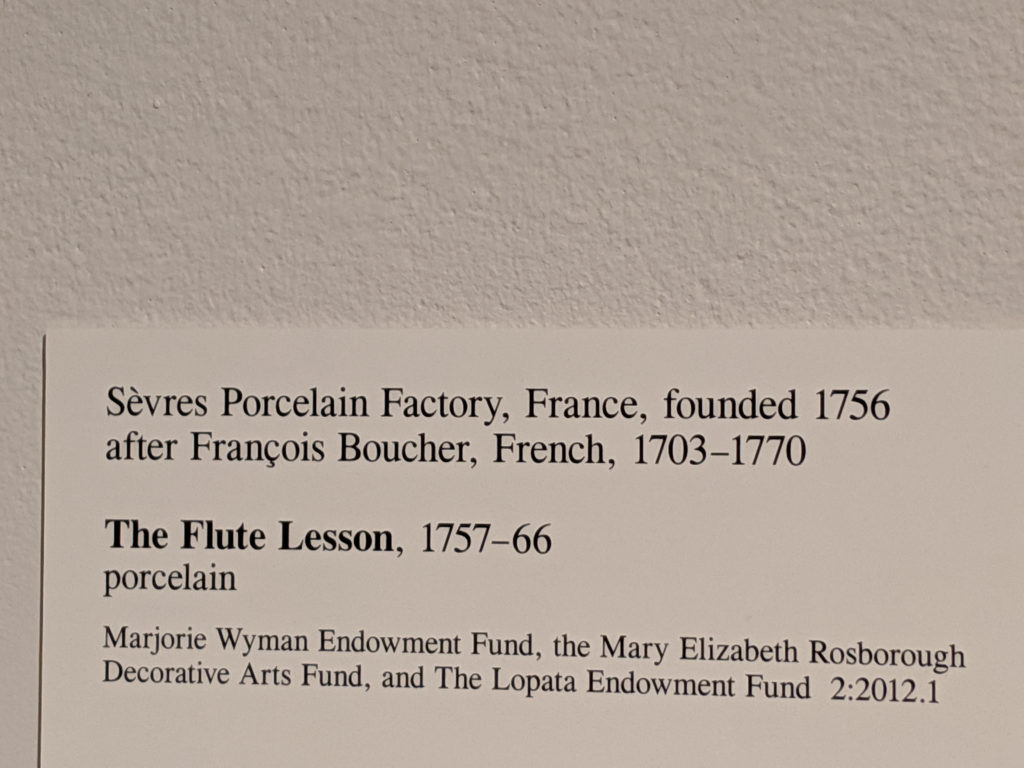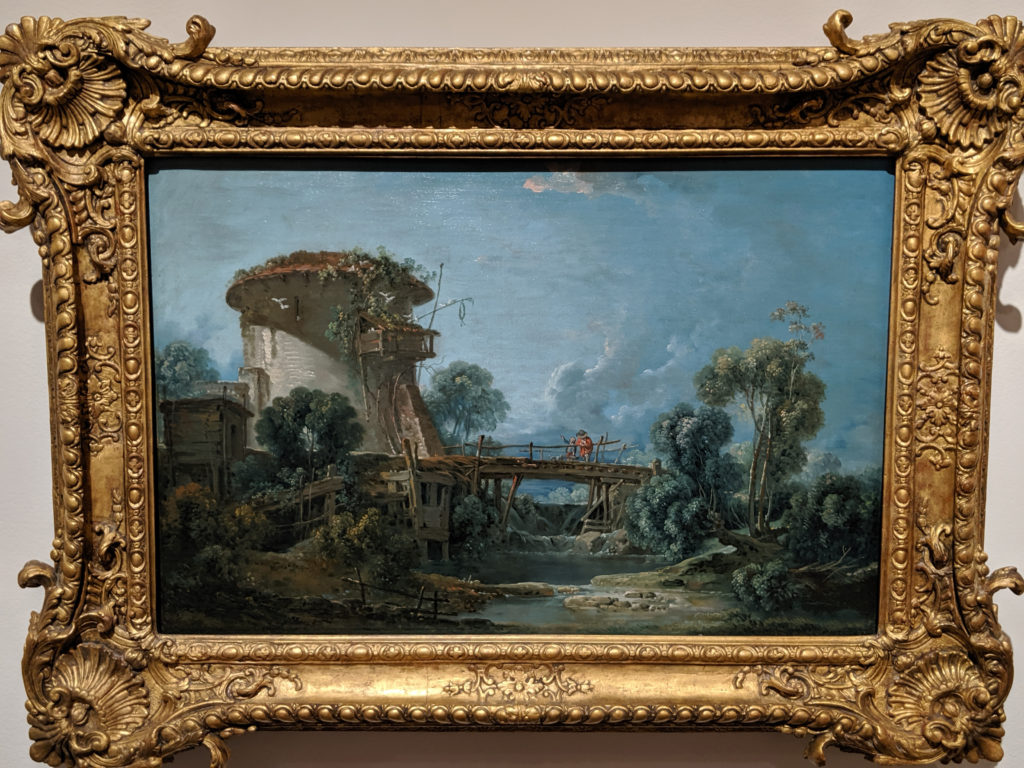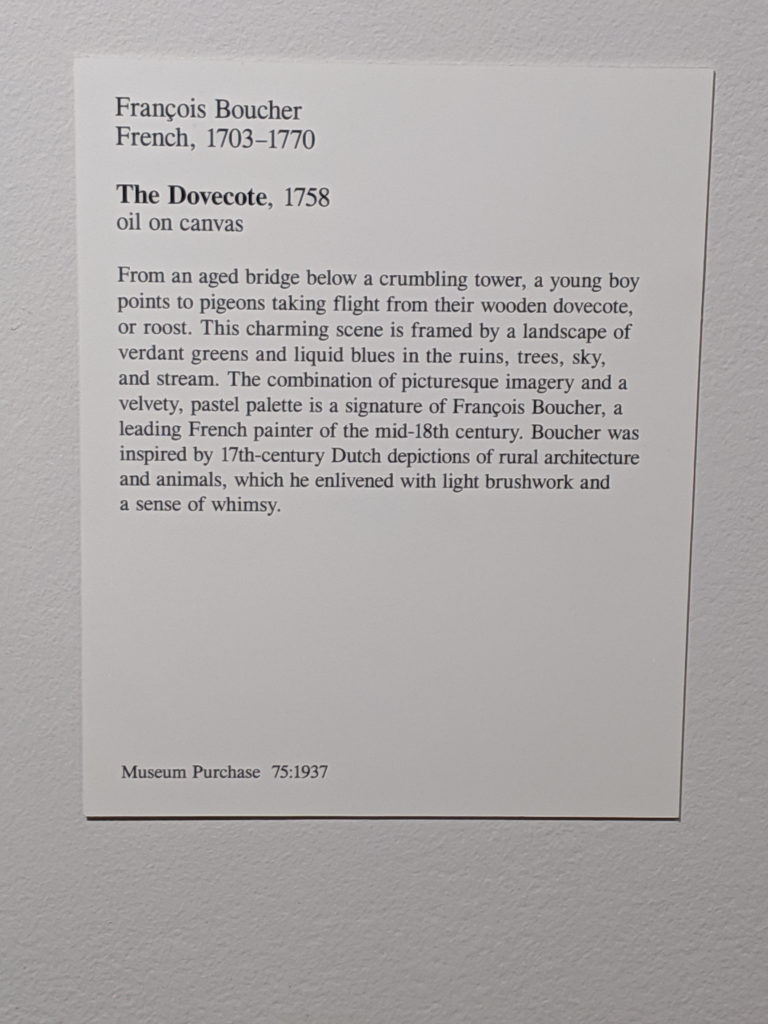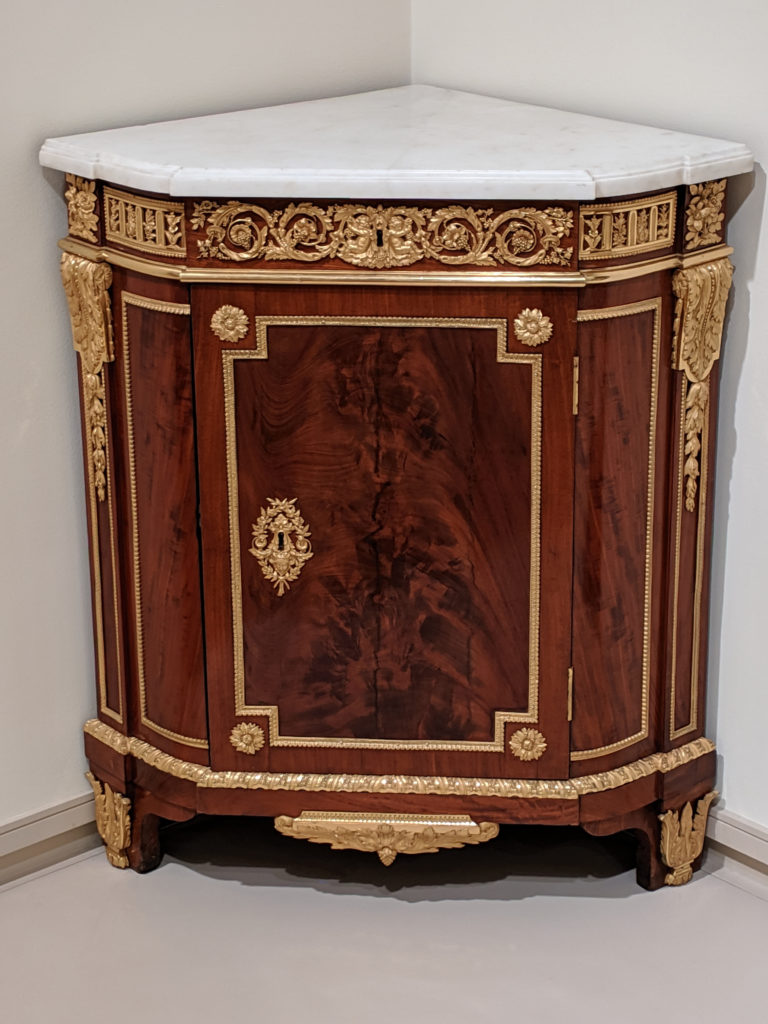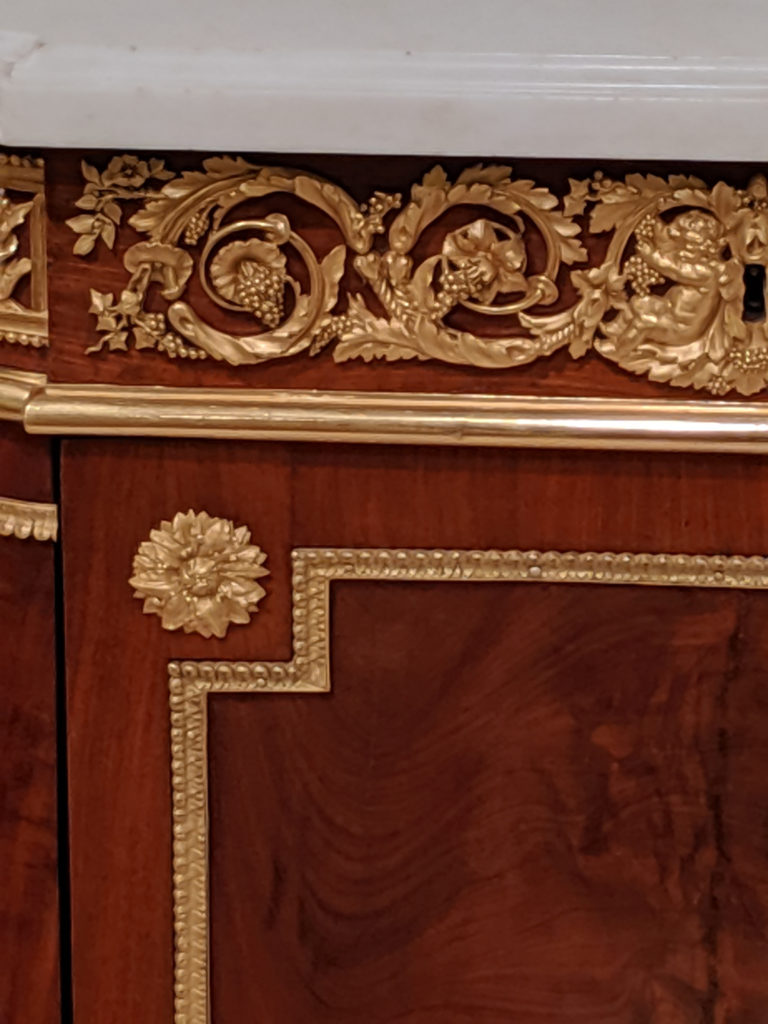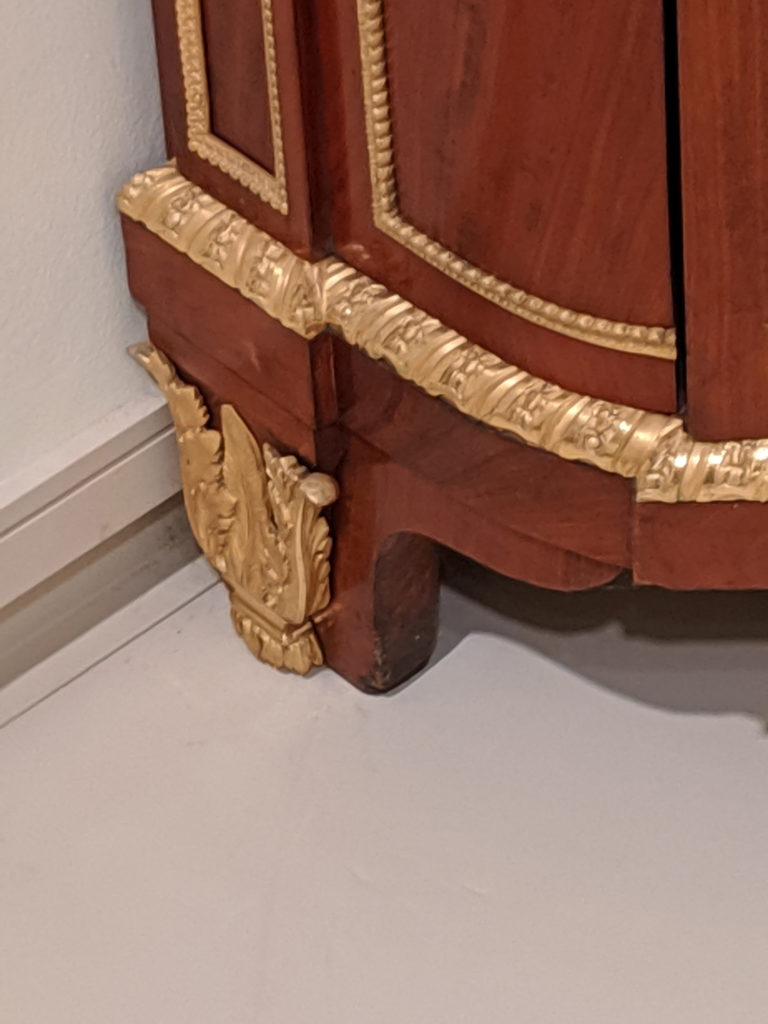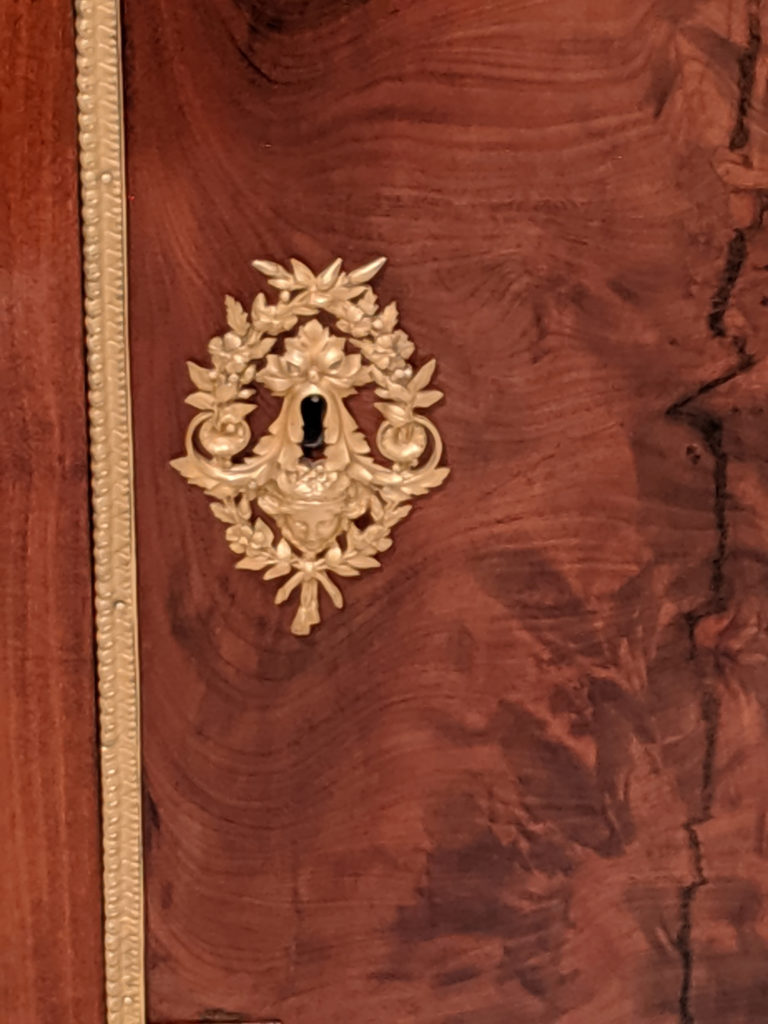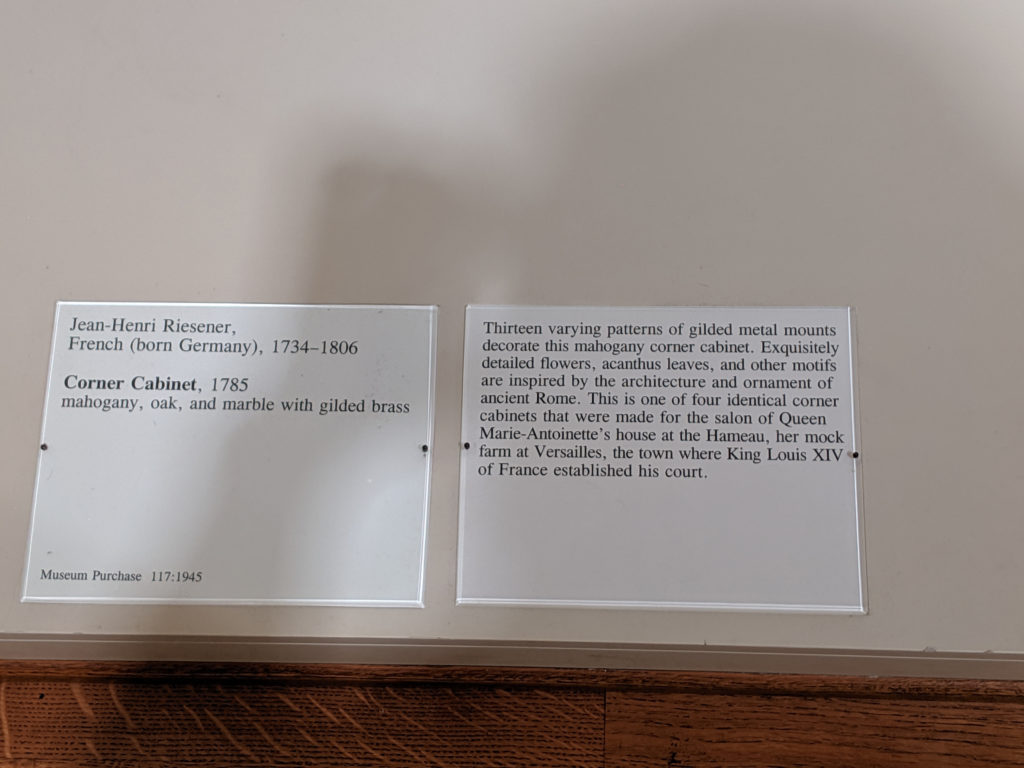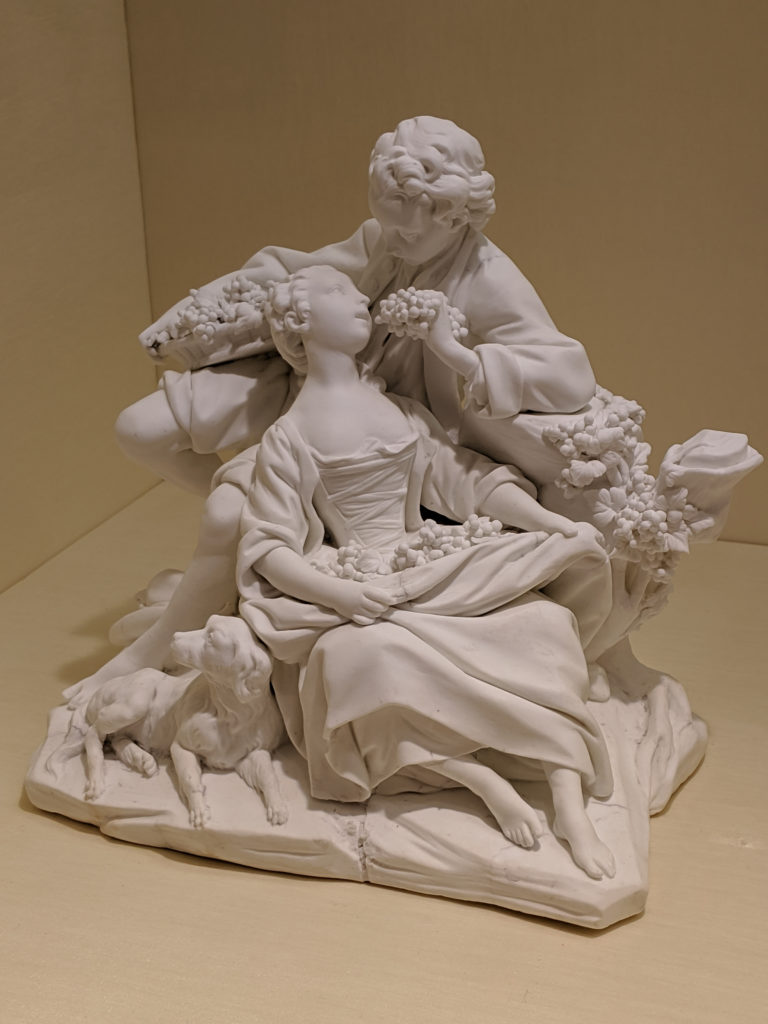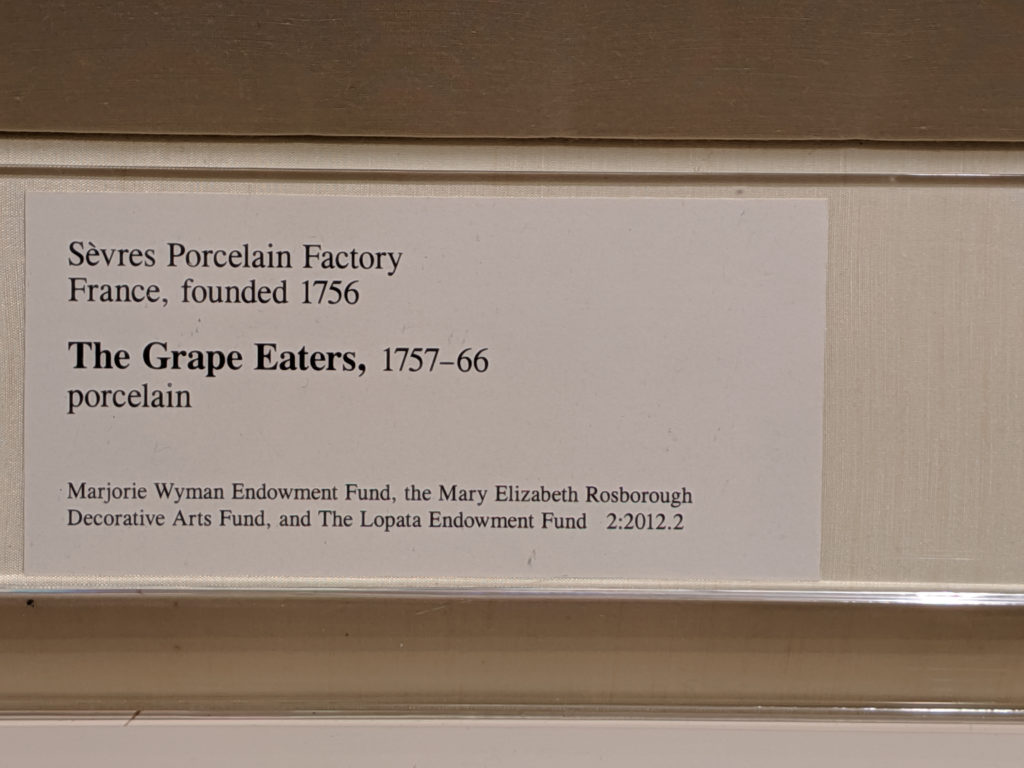You can tell this is an item that was used as intended because of the wear on the handle – the carved lines aren’t nearly as deep or distinct as they would have been originally. As such, you can also imagine that the family that this coffeepot belonged to was not necessarily of the highest reaches of the aristocracy, or even the middle ranks of the peerage, based on the design work. This probably belonged to a lower ranking modest country estate, such as featured prominently in the writings of Bronte and Austen, or even in the household of a mistress or a bastard child that was not shunned.
Tag: 18th century
Tuesday
I’m going to gloss over the pretentiousness of the silversmith’s chosen moniker (Godbehere indeed, she scoffs, stuffing an Oreo in her face as god is definitely not in this hood), and point out that, pretentious git or not, he was really rather decent at his craft. His design is nowhere near some of the ornately decorated wares of the Baroque, Rococo, and Georgian/American Revolutionary periods, but it is in its simple flashiness a kind of testament to a grander form of elegance that would come into vogue immediately following the Regency and into the early Victorian periods.
Sunday
Wednesday
Sunday
Friday
Thursday
Wednesday
Tuesday
Every time I go into the Museum, I comment on how so many of the things seem to have come out of the original countries in times of war or just after war. (Aka, many of the Islamic items are from 1919 – collapse of the Ottoman Empire, many of the French items are 1945, post-WWII, etc.) I feel sad that we’re the beneficiaries of, basically, the equivalent of looting a country of its treasures in order to maybe barely feed its people for a few days.
In this case, what a treasure it is. No exaggeration.
